Imagine stepping into a room where a sleek, mid-century modern chair sits gracefully alongside a timeworn, rustic wooden table—each piece telling its own story while complementing the other. This harmonious blend of old and new is not just about aesthetics; it is an art that bridges the past and present, offering a unique character to your home. Whether you’re a seasoned decorator or just venturing into the world of interior design, understanding how to mix diverse styles can transform your living space into a personal narrative of timeless elegance.
The beauty of mixing old and new decor styles lies in its ability to create a dynamic environment that feels both fresh and familiar. By combining different eras and influences, you can design spaces that not only reflect your personal taste but also stand the test of time. In this article, you will discover twelve inspiring ideas to seamlessly weave together vintage charm and contemporary sophistication. From pairing antique heirlooms with modern art to integrating classic patterns into minimalist interiors, these strategies will empower you to craft spaces that are as functional as they are beautiful.
Exploring the synergy between disparate design elements can be an exciting journey filled with creative possibilities. With practical tips and thoughtful guidance, you’ll learn how to embrace contrasts and create balance, ensuring that your home feels cohesive and inviting. Whether you’re looking to refresh a single room or undertake a whole-home makeover, these insights will equip you with the confidence and creativity to mix styles with flair. Let’s embark on this delightful adventure of blending the old with the new, where every piece has a place and every space tells a story.
Embracing Contrasting Design Eras
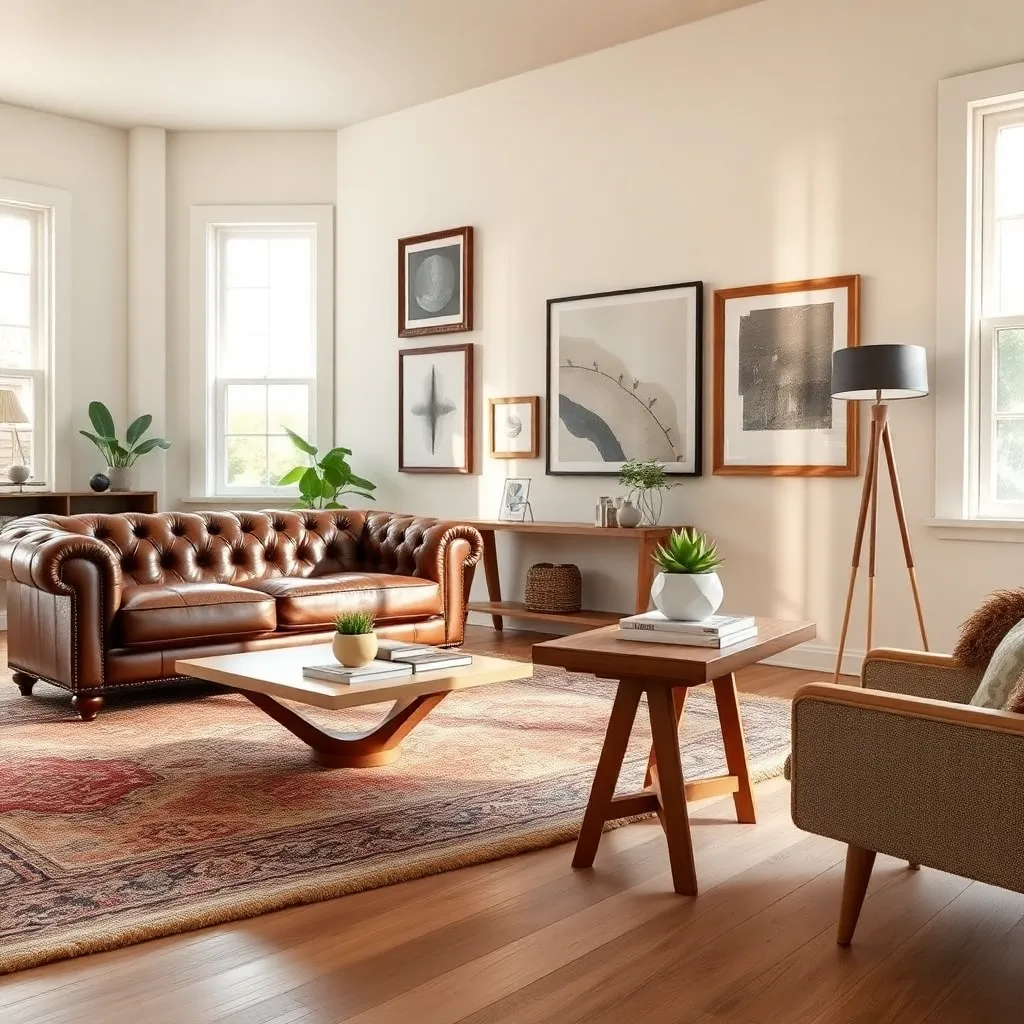
When merging distinct design eras, choose a focal piece that embodies a specific style, like a mid-century modern sofa or a vintage Victorian mirror, and build your space around it. This creates a harmonious foundation, allowing other pieces from different times to blend seamlessly without overwhelming the room.
Layering is key when embracing contrasting design eras; combine a sleek, contemporary coffee table with a classic Persian rug to add warmth and character. Balance is essential, so if one piece is ornate, keep surrounding elements simple to avoid visual clutter.
Color can be a unifying force—consider a neutral palette that allows unique design elements to shine. For a bolder approach, integrate accent colors from different eras, like pairing the vibrant hues of 60s pop art with the subtle tones of an antique armchair.
Advanced decorators can experiment with textures, such as juxtaposing smooth leather with distressed wood, to add depth and interest. Placement matters, so position modern pieces like a glass console table against a backdrop of vintage wallpaper for a striking visual contrast.
Incorporating Vintage and Modern Art
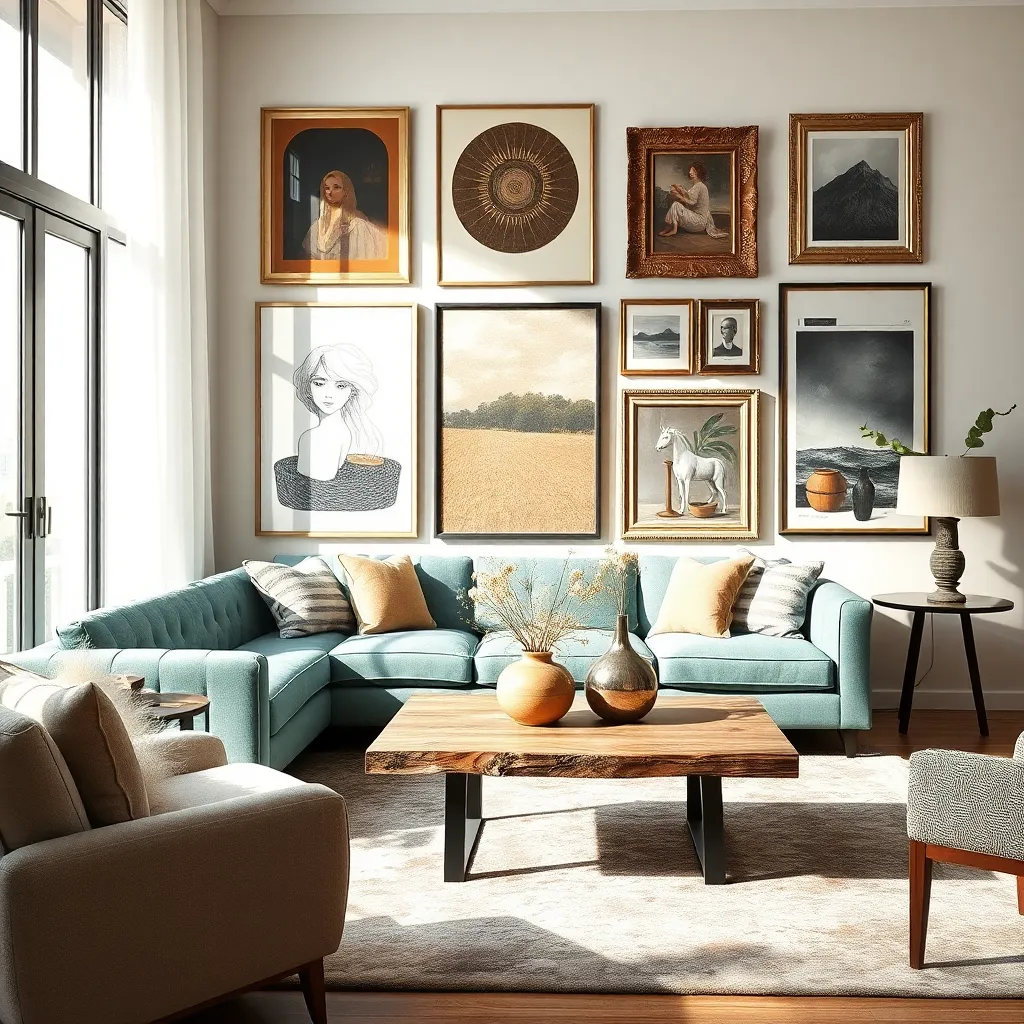
Mixing vintage and modern art can create a visually captivating and cohesive space that tells a story. Start by selecting a focal piece, like a vintage painting with rich textures, and pair it with a sleek, modern sculpture for contrast.
To achieve balance, consider the scale and color of your chosen artworks. Large vintage pieces can be complemented by smaller, minimalist modern works to avoid visual clutter while enhancing each piece’s unique attributes.
Experiment with different frames to tie the two styles together. Opt for a classic wooden frame for vintage art to add warmth, and a simple metallic frame for modern pieces to keep the look fresh and clean.
Placement plays a crucial role in blending these styles seamlessly. Arrange vintage works at eye level to draw attention, while positioning modern art slightly above or below for a dynamic look that encourages exploration.
Mixing Antique and Contemporary Furniture
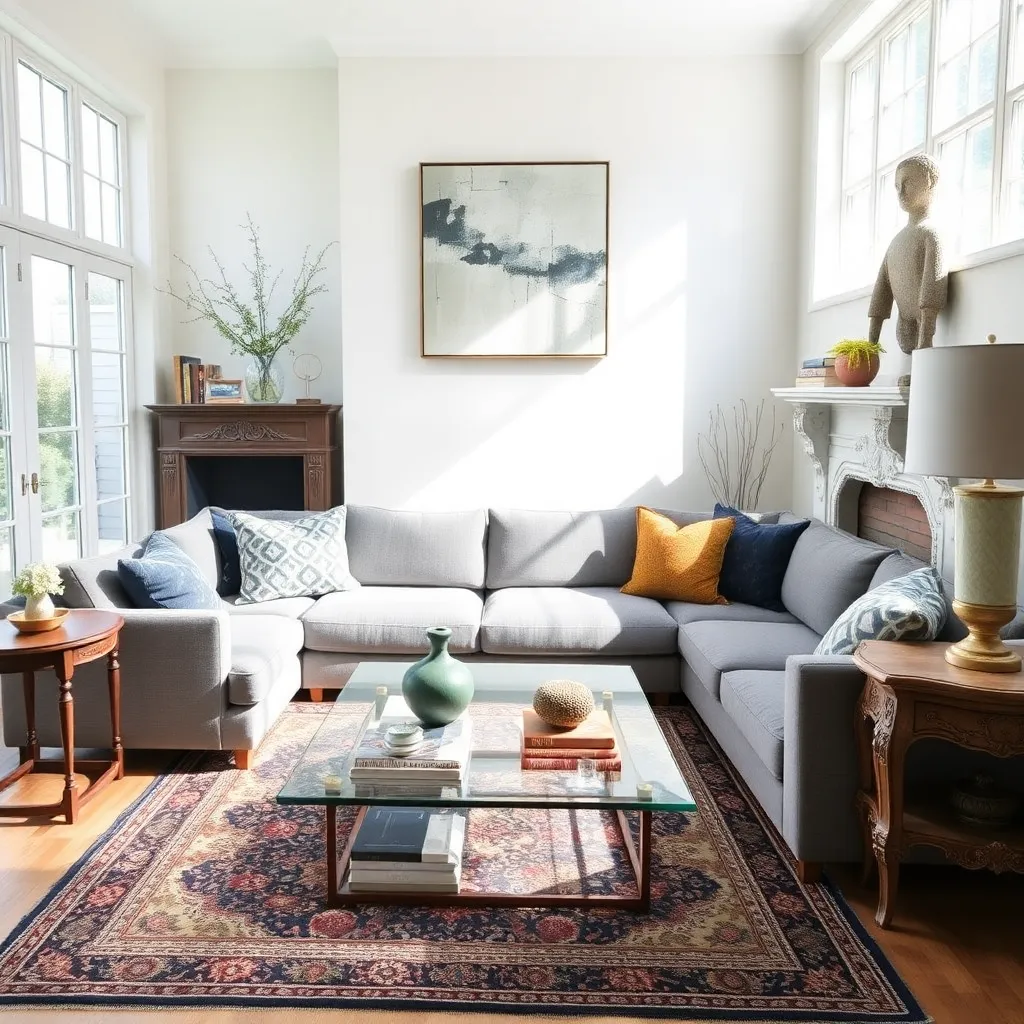
Mixing antique and contemporary furniture can create a wonderfully eclectic space that tells a story through time. Start by choosing a signature antique piece, like a Victorian armchair or a vintage wooden table, to serve as a focal point in your room.
Once you have your focal piece, incorporate contemporary elements to balance the old with the new. Consider adding a sleek, modern sofa in a neutral color to complement the intricate details of your antique furniture.
Color schemes are crucial in blending these styles seamlessly. Stick to a cohesive color palette that highlights the textures and materials of both antique and contemporary items, such as pairing a rich mahogany desk with minimalist white or gray accents.
For a more advanced setup, experiment with layering textures and materials. Mix a plush velvet antique chair with a glass or metal coffee table to add depth and contrast, ensuring each piece stands out while still contributing to a unified design theme.
Blending Classic and Trendy Textiles
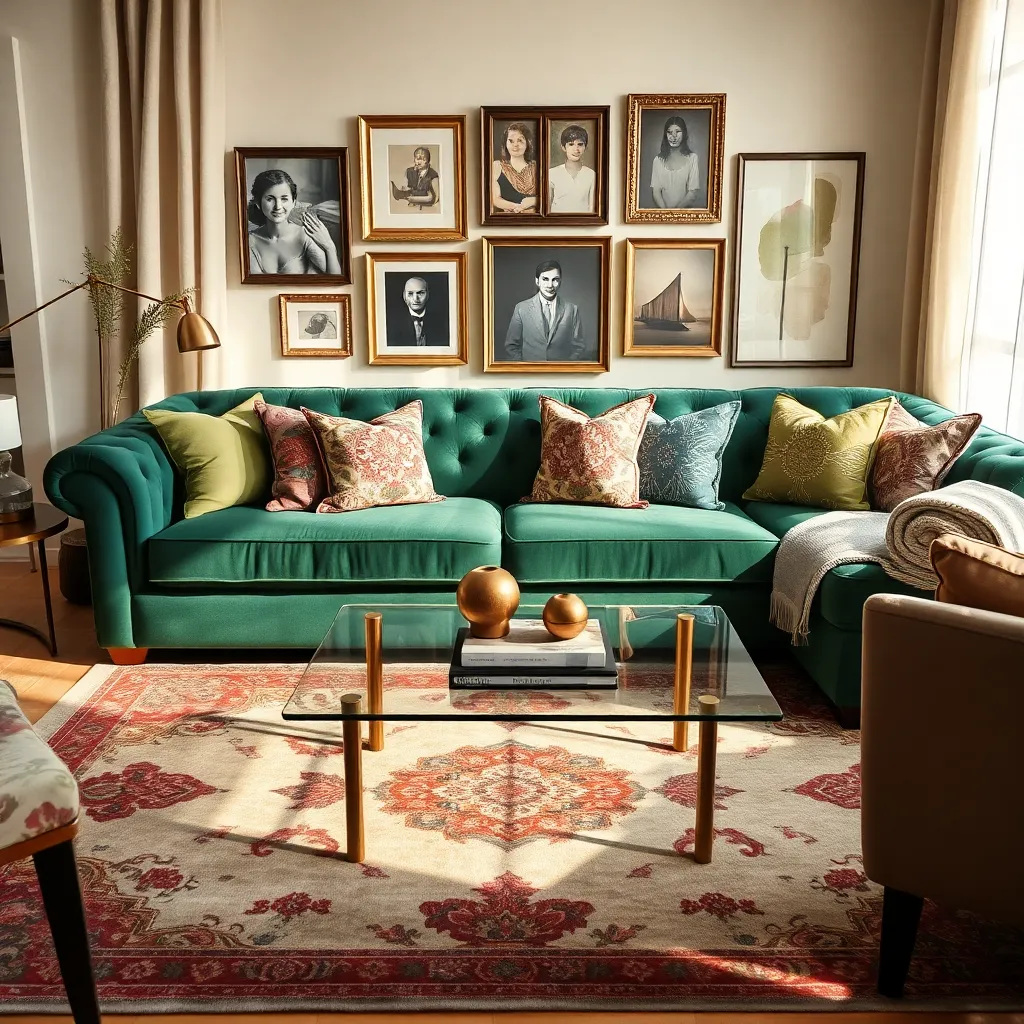
When blending classic and trendy textiles, consider starting with a neutral base. Neutral shades like beige, cream, or soft gray provide a timeless backdrop that allows bold patterns to shine.
For a seamless look, layer different textures to add depth and interest. Combine a vintage Persian rug with modern geometric cushions to create a striking contrast that feels curated yet cohesive.
Begin by selecting a few classic pieces, like a plaid throw or a velvet pillow, and complement them with trendy accents. Incorporate metallic threads or contemporary prints to keep the space fresh and dynamic.
Placement is key to achieving a harmonious blend of textiles. Use classic drapes as a backdrop and introduce trendy elements through smaller items such as table runners or wall hangings.
For beginners, start by mixing just two or three textures to avoid overwhelming the space. Advanced decorators might explore intricate pairings like silk with jute or lace with leather, balancing these elements through color coordination.
Finally, ensure that your color palette ties all the elements together. Choose a dominant color that appears in both classic and trendy textiles, creating a visual thread that connects the old with the new.
Pairing Retro and Minimalist Lighting
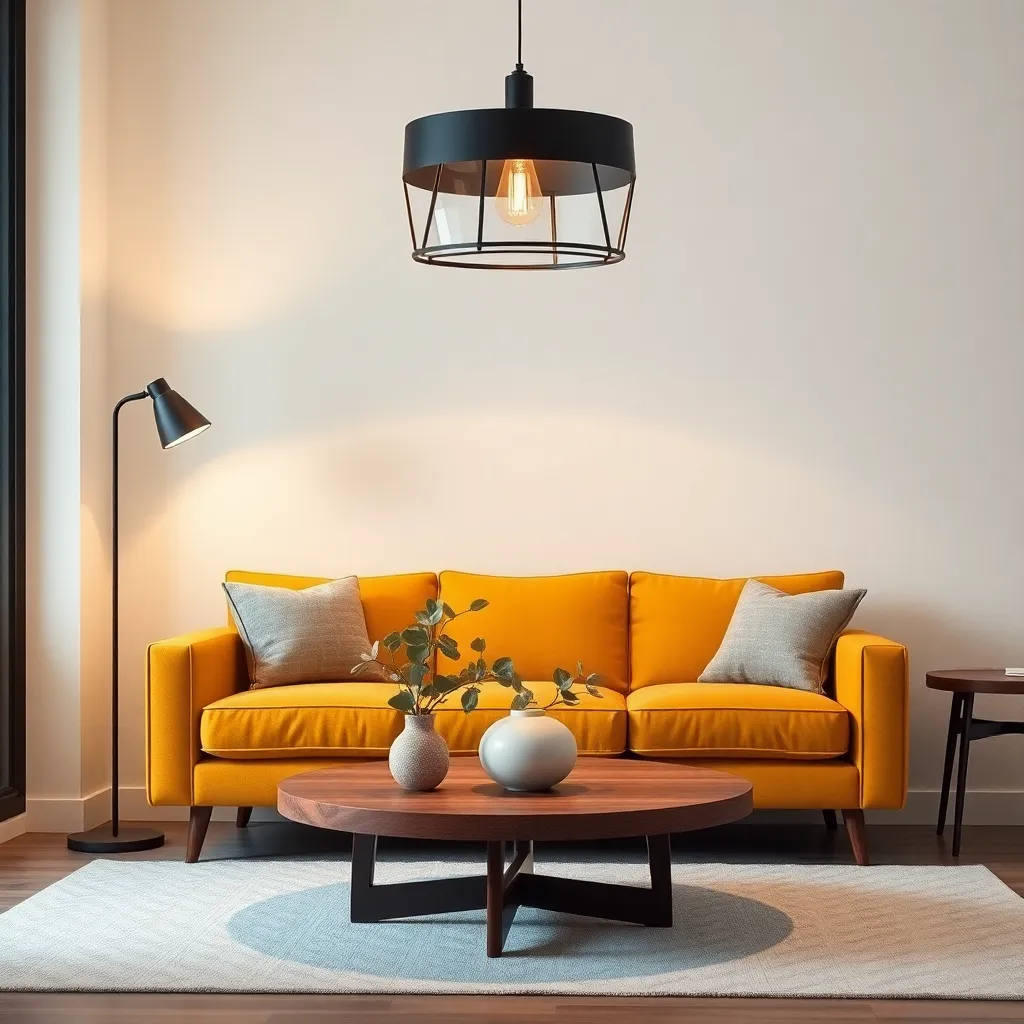
When merging retro and minimalist lighting, aim to create a balanced contrast that highlights the best of both styles. Start by selecting a bold, vintage pendant lamp as a statement piece to serve as the room’s focal point.
Incorporate minimalist lighting fixtures, such as slim, sleek floor lamps or sconces, to complement the retro piece without overwhelming the space. Choose designs with clean lines and neutral finishes to maintain the minimalist aesthetic while allowing the retro element to shine.
To ensure a cohesive look, consider the color scheme of your lighting choices. Pair warm, metallic tones like brass or copper in retro fixtures with matte black or white minimalist pieces for a harmonious blend.
For those looking to experiment, mix materials by selecting vintage lamps with textured glass or ceramic bases and pairing them with minimalist fixtures in wood or metal. This combination of textures adds depth and interest to the space without compromising the simplicity of minimalist design.
Creating Harmony with Diverse Patterns
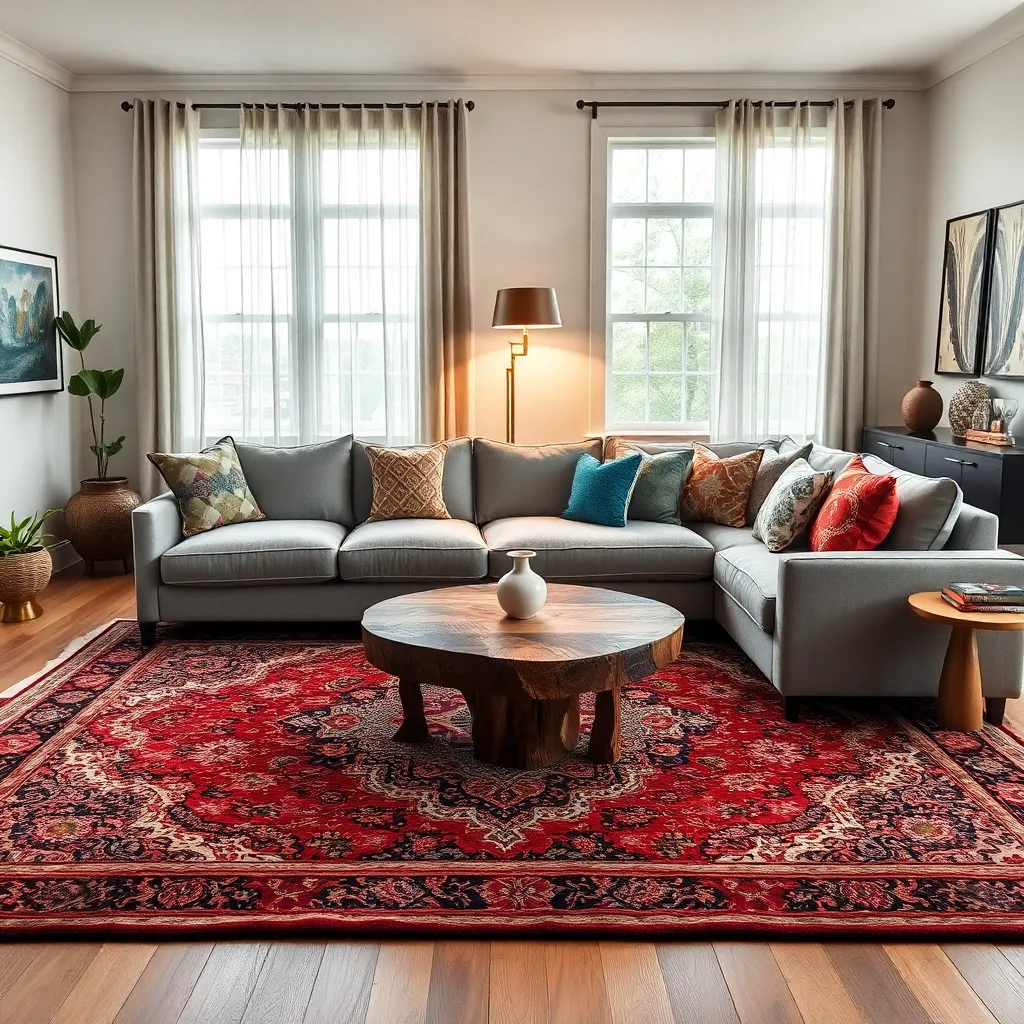
Integrating diverse patterns into your home decor can create a visually engaging and harmonious space. Begin by selecting a dominant pattern that sets the tone, such as a large floral print on a sofa or a geometric rug, which will act as the focal point of the room.
To complement your main pattern, incorporate smaller, more subdued patterns that do not compete for attention. These could include striped throw pillows or polka dot curtains, which should share at least one color with the dominant pattern to maintain cohesion.
When mixing patterns, balance is key. Ensure that the scale of the patterns varies—pairing a large pattern with several smaller ones prevents overwhelming the senses and maintains a sense of order.
For a more advanced approach, experiment with layering textures alongside patterns. This can involve combining a plush velvet cushion with a woven throw, adding depth and interest while maintaining a coherent look.
Uniting Traditional and Modern Color Palettes
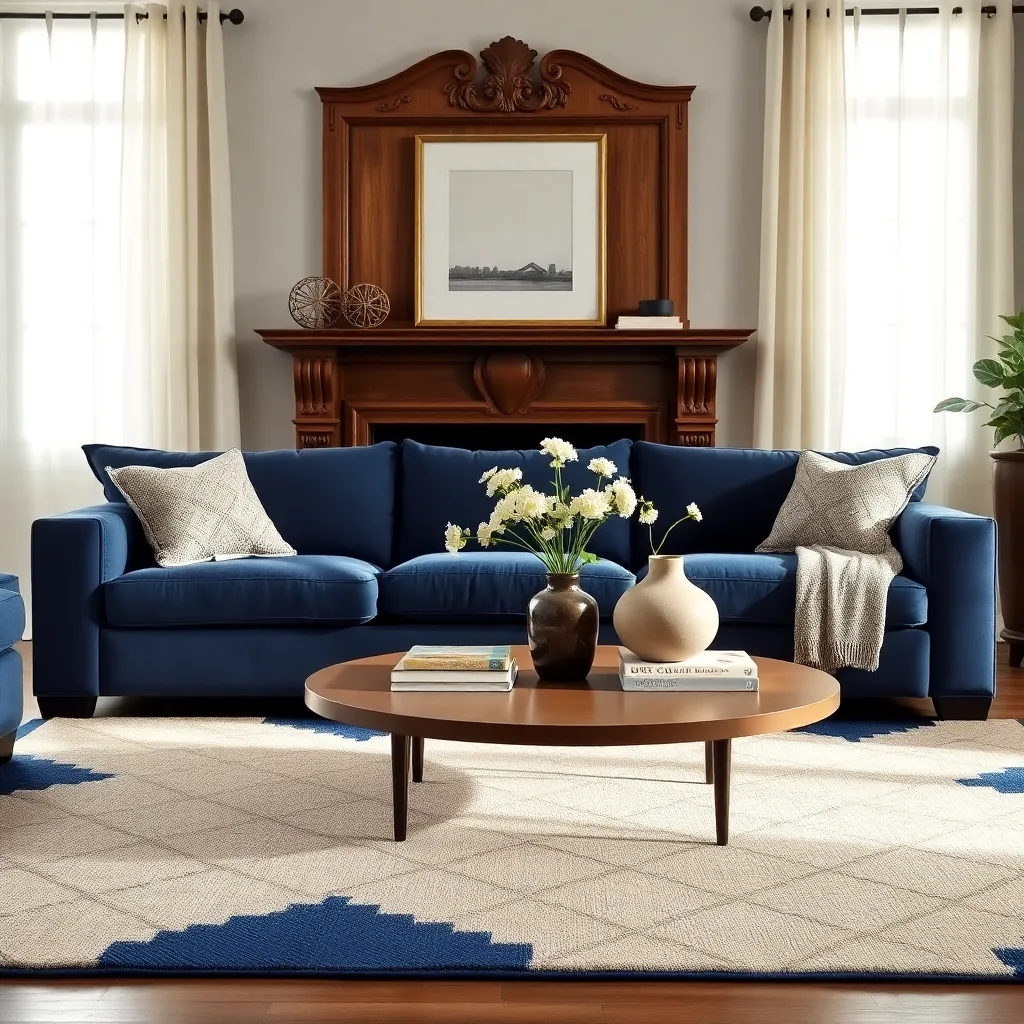
Blending traditional and modern color palettes begins with understanding the unique strengths of each style. Traditional colors often feature rich, deep tones like burgundy and navy, while modern palettes lean towards neutral shades such as white, gray, and black.
To create a harmonious blend, consider incorporating these classic hues into your modern space through accent pieces like cushions or artwork. Pairing a contemporary gray sofa with burgundy throw pillows can subtly unite these contrasting styles without overwhelming the room.
Another method is to use one style as the foundation and the other as an accent. For instance, painting the walls in a soft white or light gray maintains a modern base, while introducing a traditional rug with intricate patterns can add depth and character.
For a more cohesive look, select a unifying element such as a neutral color that appears in both traditional and modern pieces throughout the room. Wooden furniture with a natural finish can effectively bridge the gap, offering warmth and versatility that suits both styles.
Integrating Rustic and Sleek Materials
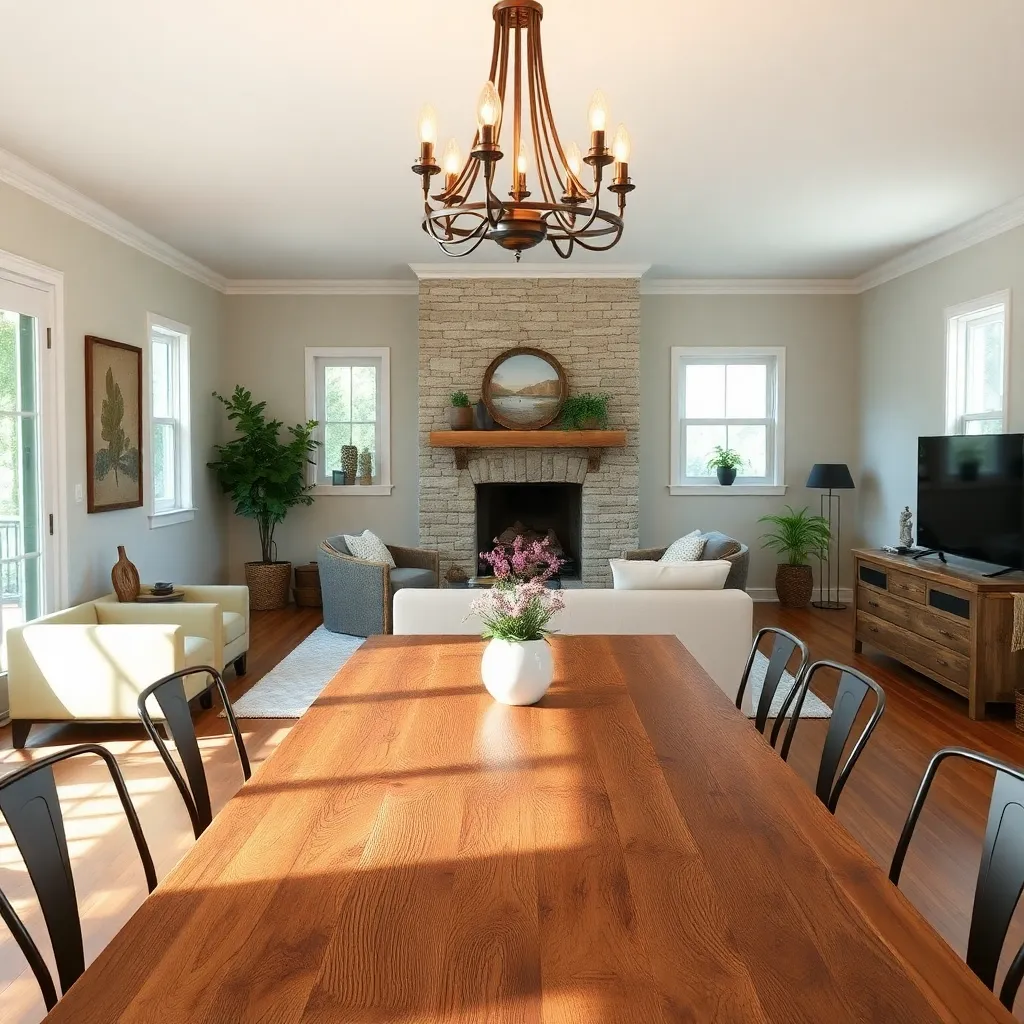
To successfully integrate rustic and sleek materials, start by choosing a central piece that embodies both styles, like a wooden dining table with metal legs. This combination offers a balance of natural warmth and modern elegance, creating a cohesive focal point in any room.
When selecting additional furniture, consider items like a leather sofa paired with a reclaimed wood coffee table. This pairing not only enhances the rustic charm but also adds a touch of sophistication through the sleek, smooth texture of leather.
Incorporate a complementary color palette to unify these materials, such as earthy tones mixed with metallic accents. Think about using deep browns and greens alongside brushed gold or silver elements to create a visually appealing contrast that enriches the overall design.
For advanced decorators, experiment with layering textures by adding plush throw blankets or faux fur rugs on sleek surfaces. This technique brings depth to the space and highlights the interplay between different materials, enhancing the tactile experience of the room.
Fusing Timeless and Cutting-Edge Accessories
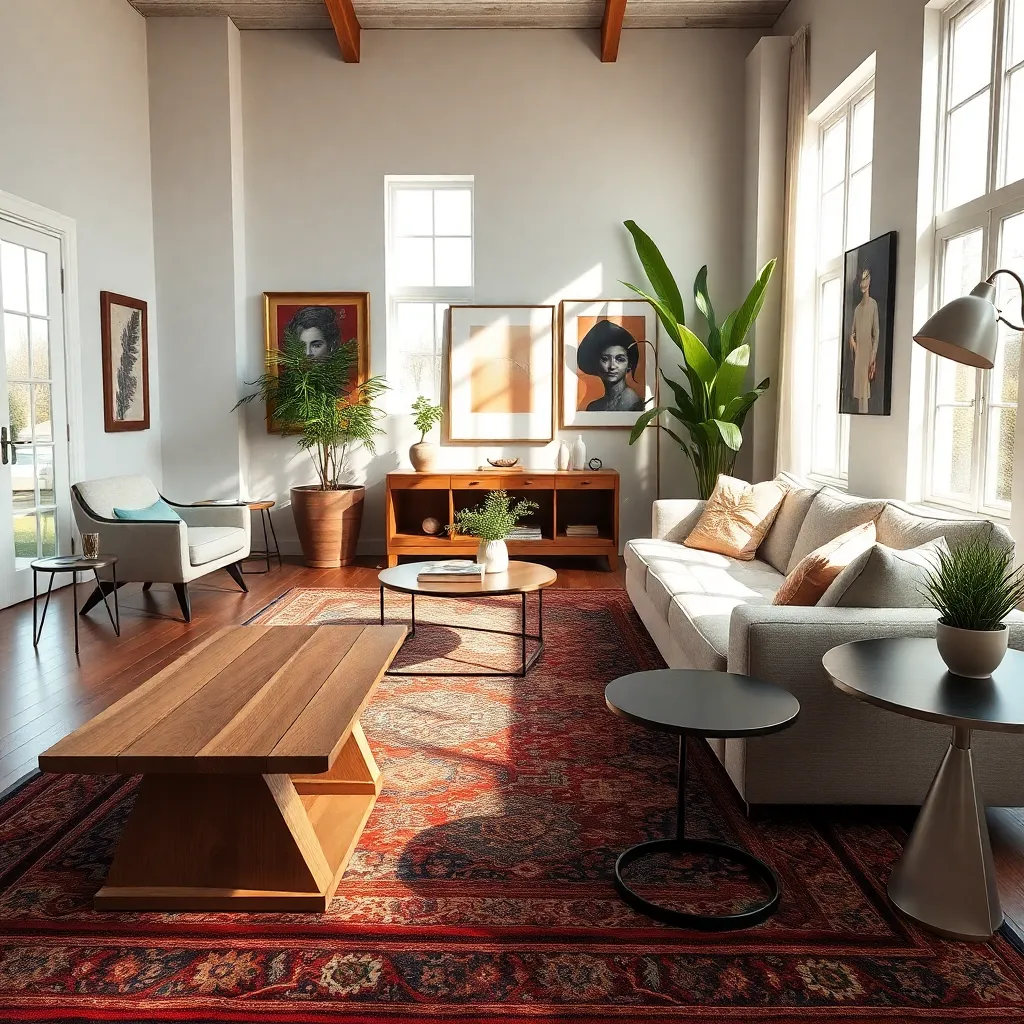
To elegantly combine timeless and cutting-edge accessories, begin by selecting a primary style to anchor your space, such as mid-century modern or contemporary minimalism. Then, introduce contrasting elements like a vintage lamp or a modern art piece to create a dynamic focal point.
When choosing accessories, focus on pieces that offer a blend of form and function. A classic leather-bound book collection can be paired with a sleek, metallic bookend, creating a fusion of old-world charm and modern sleekness.
Consider texture and material as key players in this design strategy. Incorporate plush velvet cushions against a backdrop of a streamlined, metal-framed sofa to add depth and interest that feels both inviting and sophisticated.
For color schemes, opt for neutral foundations to allow your accessories to shine. A monochrome palette can serve as the perfect canvas for introducing vibrant, avant-garde sculptures or a vintage Persian rug, ensuring each element complements the other harmoniously.
Layering Historical and Current Styles
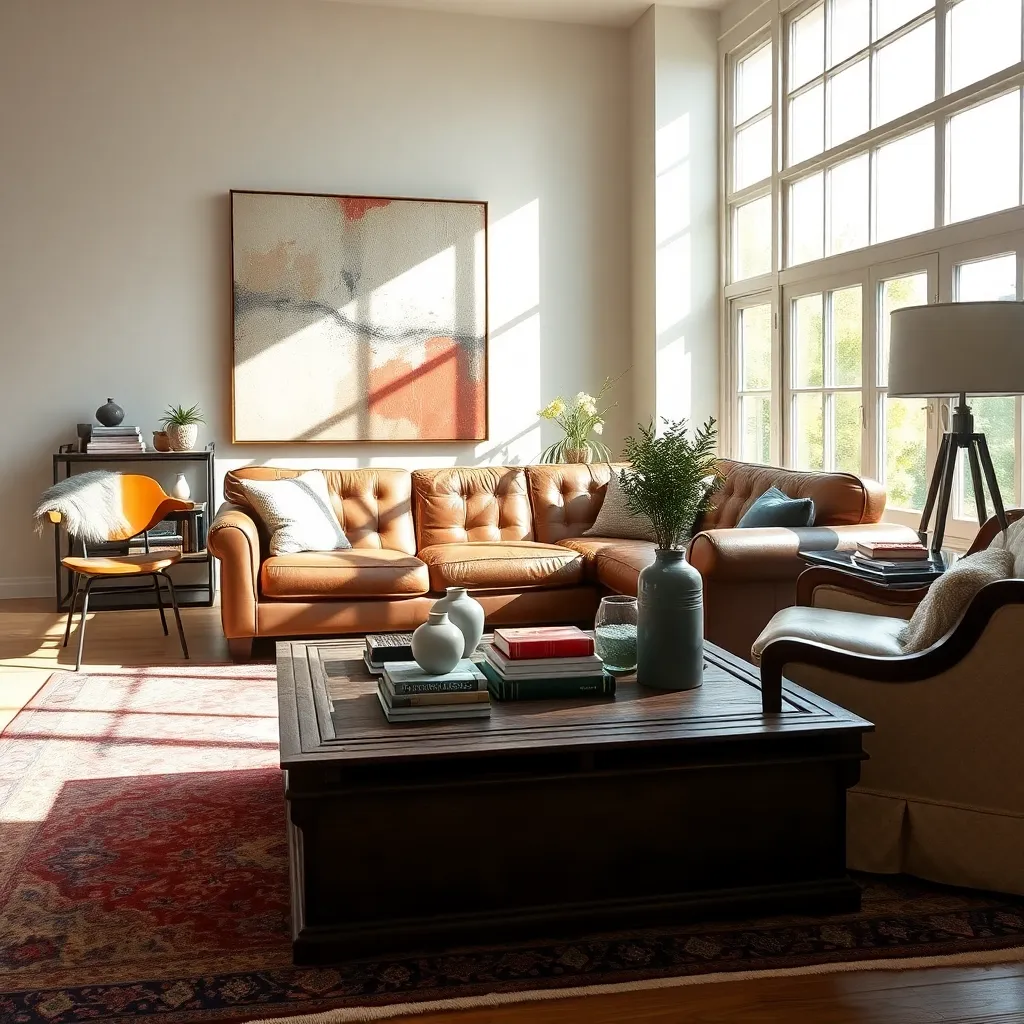
Blending historical and current styles can create a unique and personalized home aesthetic that reflects both the past and the present. Start by selecting a single antique piece, such as a vintage armchair or an ornate mirror, and use it as a focal point in a modern room to create a sense of balance and harmony.
Consider color schemes that highlight the beauty of both old and new elements. Pair a classic mahogany table with contemporary chairs in a bold color, like teal or mustard, to create a striking contrast that feels cohesive.
Integrating different textures is another way to layer styles effectively. Combine a sleek, modern sofa with a vintage Persian rug to merge the softness and warmth of traditional textiles with the clean lines of contemporary furniture.
For advanced decorators, experiment with juxtaposing different art styles on the same wall. Mix a baroque painting with minimalist prints to achieve an eclectic gallery wall that speaks to diverse tastes and eras.
Bridging Generations with Decor Accents
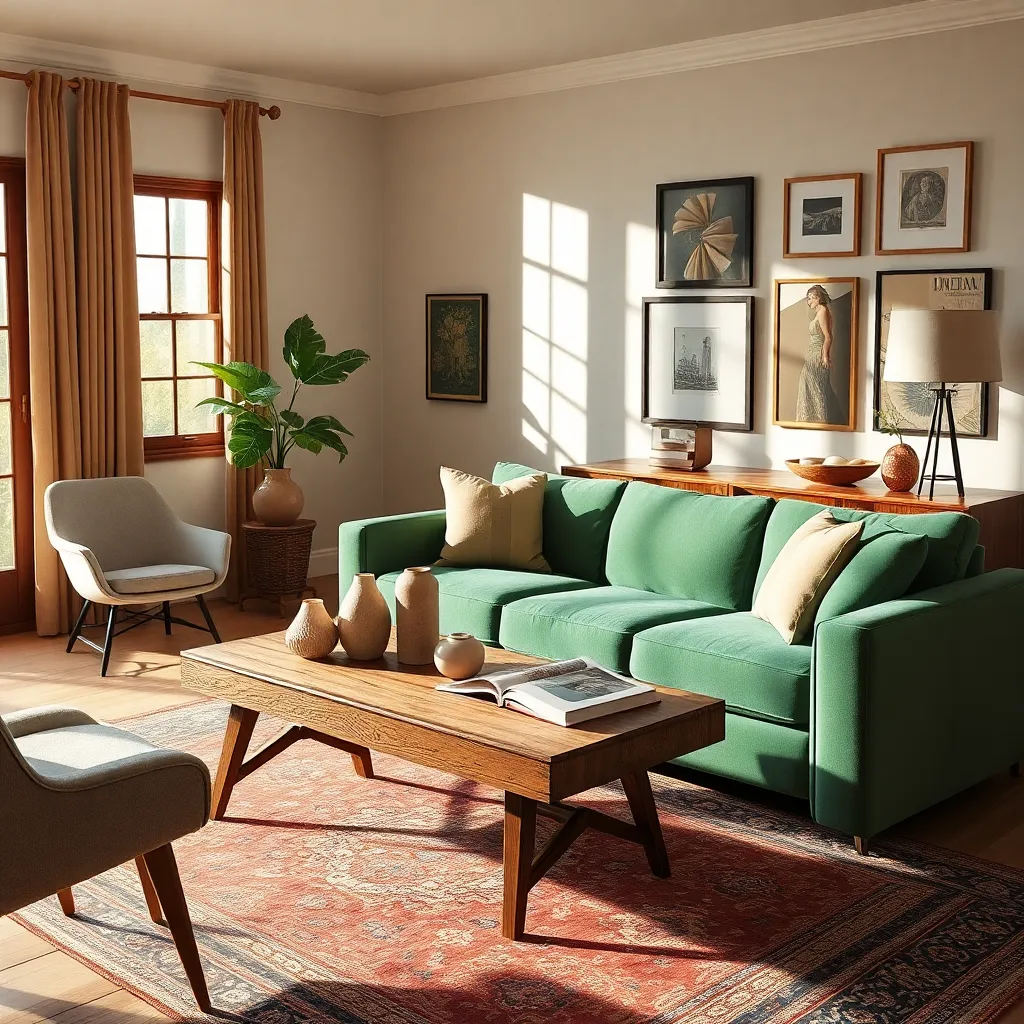
One effective way to bridge generations with decor accents is by incorporating heirloom pieces into a modern setting. Start by selecting one or two standout items, such as a vintage lamp or an antique mirror, to serve as focal points in your room.
Integrate these items with contemporary furniture by using a cohesive color palette. For instance, if you have a vintage wooden coffee table, pair it with a modern sofa in a neutral tone, allowing the table’s character to shine.
Mixing textures can further enhance the blend of old and new. Consider pairing a smooth, sleek leather chair with a woven throw from your grandmother’s collection, creating a tactile and visual contrast.
Advanced decorators might experiment with layering different styles within the same space. A mid-century modern chair can be placed under a traditional chandelier, creating a dynamic and unexpected juxtaposition.
Crafting a Cohesive Eclectic Space
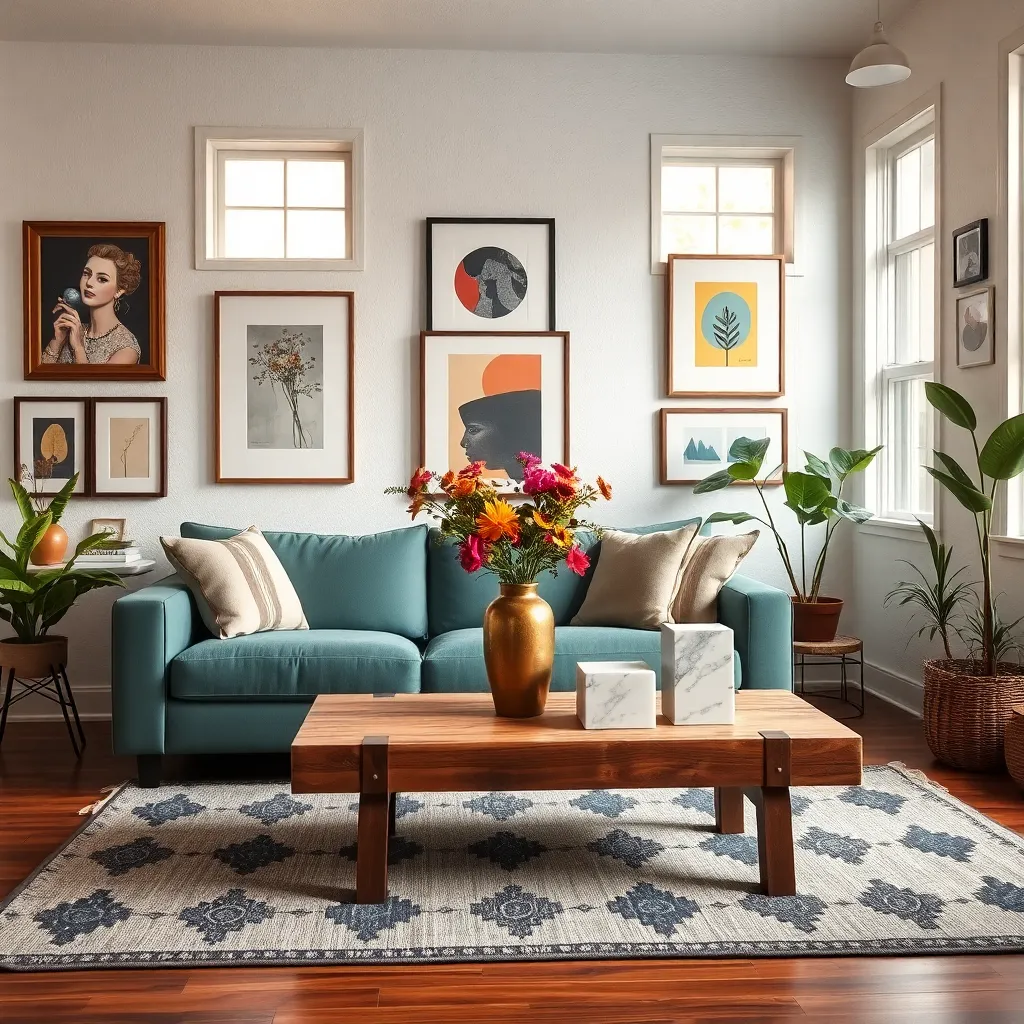
To create a cohesive eclectic space, start by choosing a color palette that will serve as the foundation for your design. This palette should include three to five complementary colors that can tie together the various elements in the room.
Balance is key when mixing old and new decor styles; aim for a harmonious blend of textures and materials. For instance, juxtapose a vintage wooden table with sleek, modern metal chairs to create visual interest without overwhelming the senses.
Consider the scale and proportion of your furniture to ensure that each piece complements the others. Large, antique armoires can be paired with smaller, contemporary side tables to maintain an engaging yet balanced atmosphere.
Incorporate various patterns and prints, but limit the number to avoid clashing. Use a neutral area rug to ground the space, allowing you to introduce vibrant throw pillows or an eye-catching piece of art as focal points.
Conclusion: Growing Success with These Plants
In exploring the fusion of old and new decor styles, we’ve delved into 12 enriching relationship concepts: embracing compromise, understanding generational differences, honoring past experiences, fostering open communication, encouraging collaboration, nurturing creativity, balancing tradition with innovation, cultivating empathy, valuing uniqueness, promoting flexibility, building a shared vision, and celebrating milestones. Each concept serves as a decorative thread that weaves together the tapestry of a thriving relationship.
As a practical next step, identify one area in your home and relationship where you can blend something old with something new, whether it’s redecorating a shared space or finding a novel way to solve a recurring issue. This small action can reinforce the harmony and growth between you and your partner.
Save or bookmark this article now, as these insights can serve as a valuable reference in navigating the intricate blend of past and present in your relationship journey. By integrating these concepts into your daily interactions, you’re not just decorating your space but fortifying the foundation for future relationship success. Embrace this creative journey with enthusiasm, and watch your relationship flourish in unexpected and delightful ways.
